Why Art Created By Artificial Intelligence Is Both Irresistible and Horrifying
And we wonder whether it's art if its maker risks nothing of themselves.

When I was a teenager, I spent months teaching myself to draw by copying the old masters like Hans Holbein, a 16th-century artist favored by the court of Henry VIII. But to my everlasting frustration, most of my Holbeins had a smudgy off-kilter bit, an eye or mouth that got distorted because I'd worn a hole right through the paper with my eraser. I tried too hard to replicate the lightness of Holbein's touch.
Ease is surely the hardest thing to fake.
Or it was anyway.
Last week a piece of art generated by an artificial intelligence program bested a bunch of human-made works to win a contest in Colorado. Judges picked that baroque rendering of a space opera though they knew it was machine-made. To be sure, this wasn't some elite global competition, but still, it feels like a turning point.
These new text-to-art programs absorb every artistic technique, every artist’s work, and every cultural reference ever posted on the internet. So now everyone could have the ability to go straight from a thought-provoking concept to visual execution in minutes. Forget learning the tools of a craft; forget failing after months of effort.
And if what you make isn’t quite what you wanted, you can try alternative techniques and genres in seconds with a new text prompt. Hell, I could probably give A.I. a request to draw my kids as Holbein might have, and voila. No need to dive into the sharky waters of my own limitations.
It all sounds like the kind of fraught magic wish that only a genie can grant. Surely there are karmic consequences for skipping the humbling, painstaking parts of the creative process. Is it even art if the artist risks nothing of themselves? (I know that’s a futile lament in an era when silly digital cartoons of apes in hats fetch millions of dollars.)
The work you get with A.I. programs like DALL-E 2, Stable Diffusion, and MidJourney is entirely created by machines but does depend on the quality of text prompts given to it by humans. And, as programmers say, garbage in, garbage out. So lots of A.I. art being posted online is basically what you'd expect if you unleashed our collective id with unlimited artistic references and no inhibitions.
But some of this stuff is freakily and amazing. The New York Times’ @KevinRoose asked DALL-E2 to imagine what infinite joy looked like and this is what he got:

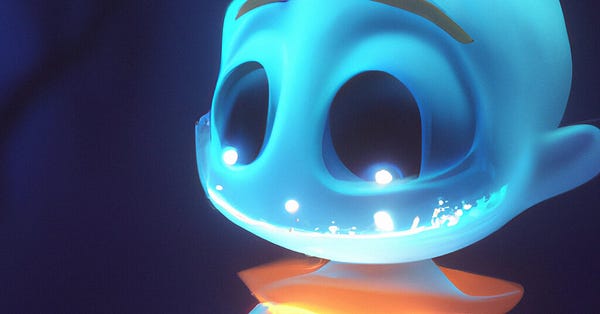
And when prompted for a picture of "slugs getting married at golden hour,” A.I. software made this photo-realistic image. The program decided on its own that slugs would wear honeycomb and cotton ball wedding headdresses.




And here’s some A.I. art posted on a discussion board for users of Stable Diffusion:
Maybe artificial intelligence is to art what the microwave was to cooking, a disruptive tool, but not a rival. After all, frozen meals haven’t quelled our appreciation for creative chefs. And you can say that filmmaking is more accessible to new voices thanks to easy software tools and smartphones.
However, some online art communities are banning A.I. generated works because it is hard to tell the difference between what humans create using digital tools and what A.I. creates using human prompts. There is a legit fear that these programs will become virtual vampires that feed on the talent and labor of real artists and illustrators siphoning off their energy for the benefit of others.
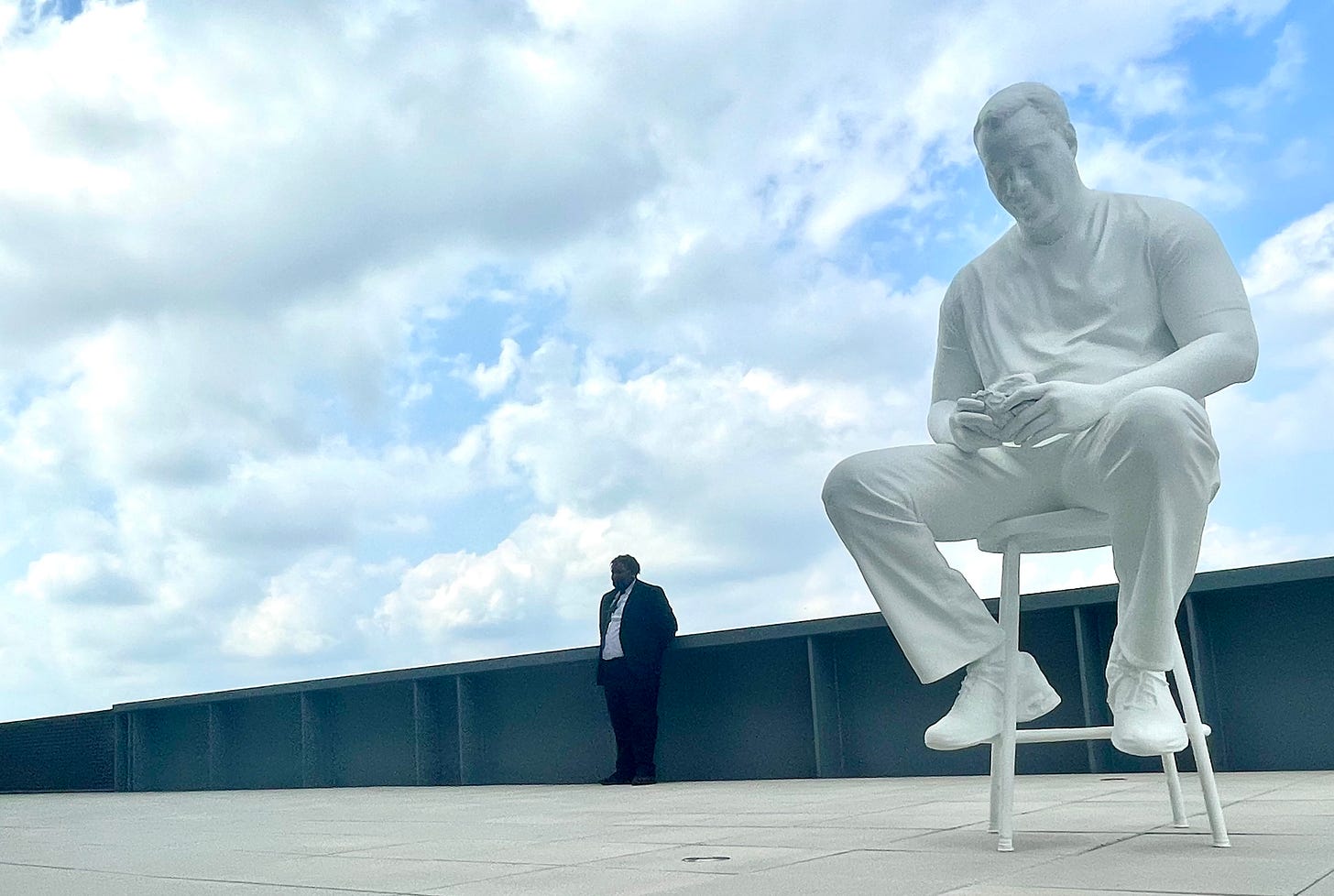
I thought about all this while walking through rooms and rooms of human-made art at the Whitney Biennial exhibition recently. There, the works loomed over you as massive statues or enticed you to bend down to look through tiny screens. And if you leaned in, you could see the places where an painter hesitated and where the lines were thick with emotion.
Lots of people were gathered around one installation that looked like a spectacular golden skirt radiating from an ominous hooded figure. You had to get close to realize the skirt was made of empty bullet casings threaded together. The effect of that eerie figure and the bullets was visceral. And as we looked, really looked at it from all sides, I felt a bond across with the installation’s maker, a Canadian artist Rebecca Belmore.
Maybe these A.I. tools won't destroy that connection. But they could dilute it simply due to the sheer volume of what’s being shared now that making images is so easy. Think of the billions of digital photos out there. How do can our brains give the good ones space and attention.
I never found out how I would have drawn portraits in my own style. I didn’t stay with it past the hard part. So it’s hugely tempting to play with these new A.I. tools. However, I did spend enough time trying to mimic Holbeins to understand that much of the genius bound to how a work of art was made.
I used to imagine Holbein’s hand lifting from the page in the tiniest increments to show where someone's flesh was softer, fuller, or less important to the picture. He could look at his subject, a lord, a mother, a future queen, and choose to depict weakness or youth, fatigue or arrogance by what held back as much as what he emphasized. I don’t know of software that can do that yet.
A.I. doesn’t have to fight past its own inhibitions and fears to put something new in the world. Machines have no need for bravery. But for we creatures of blood and bone, it is still everything.
Hello all, I’m so happy you’re here. After a chaotic summer, I’m back on a regular weekend publishing schedule. As always, if you love It’s Not Just You, forward to a friend, and if you’re not a subscriber, sign up for free here. (Billing is still paused for paid subscribers.)
ART DELIGHTS
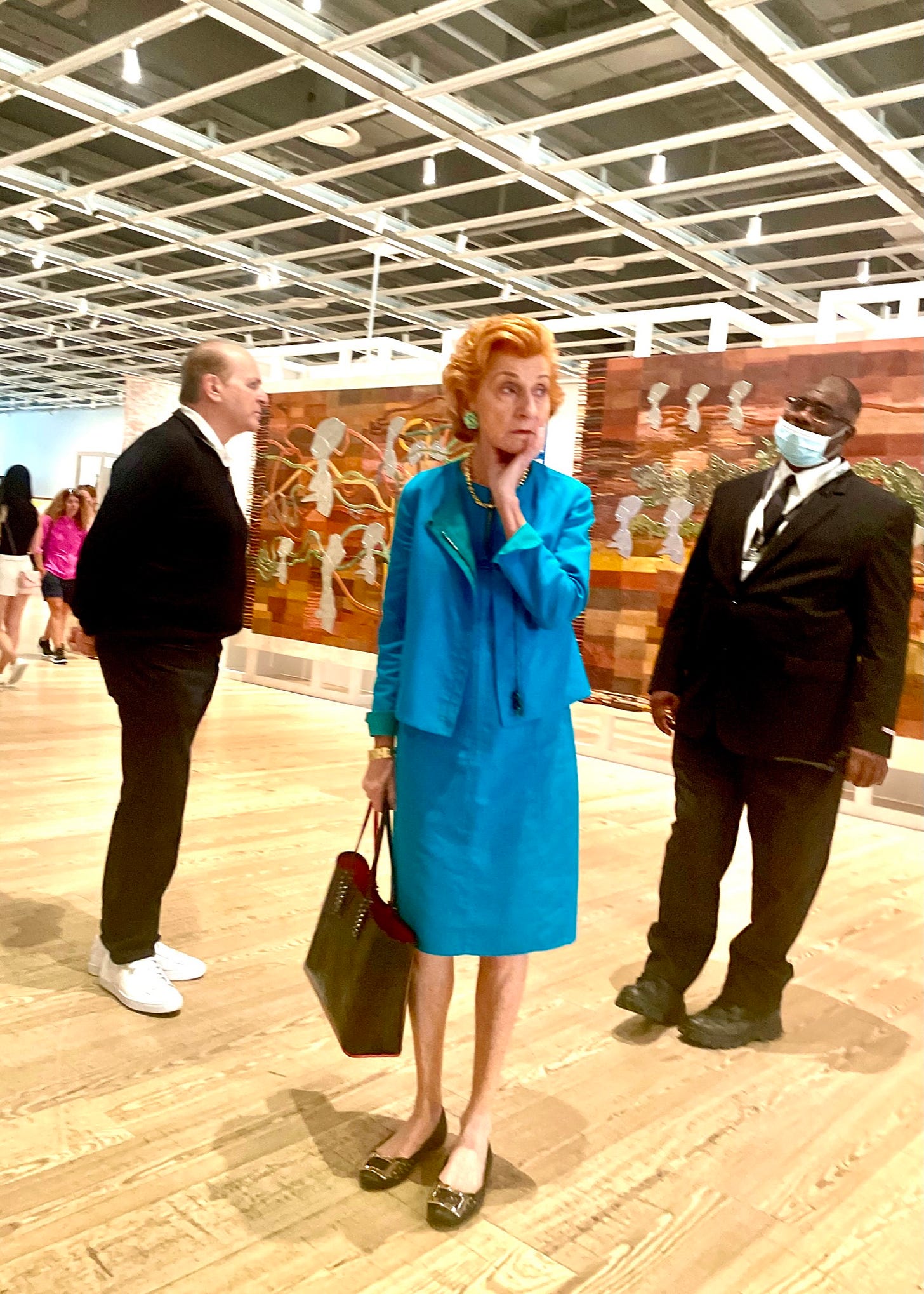
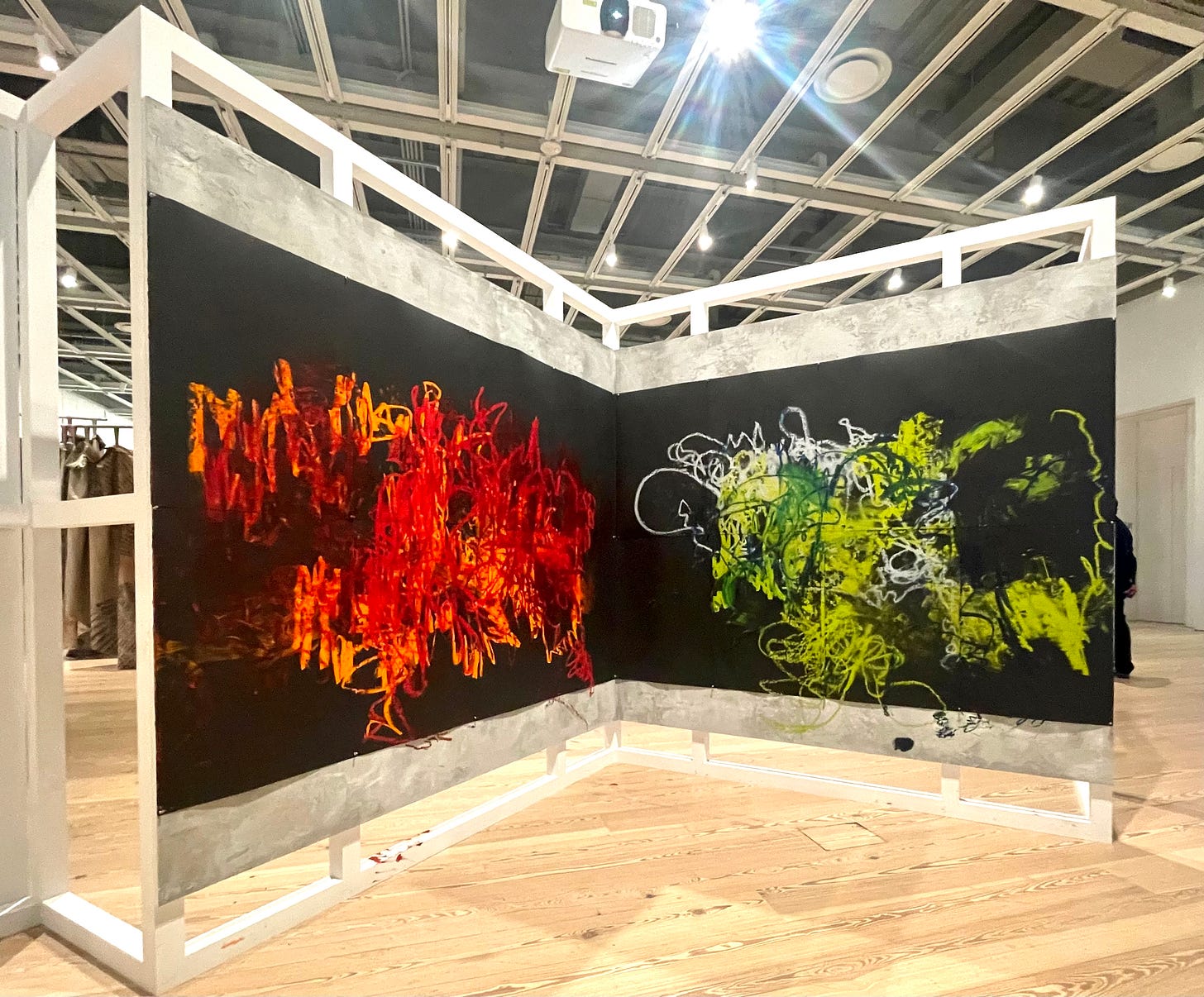
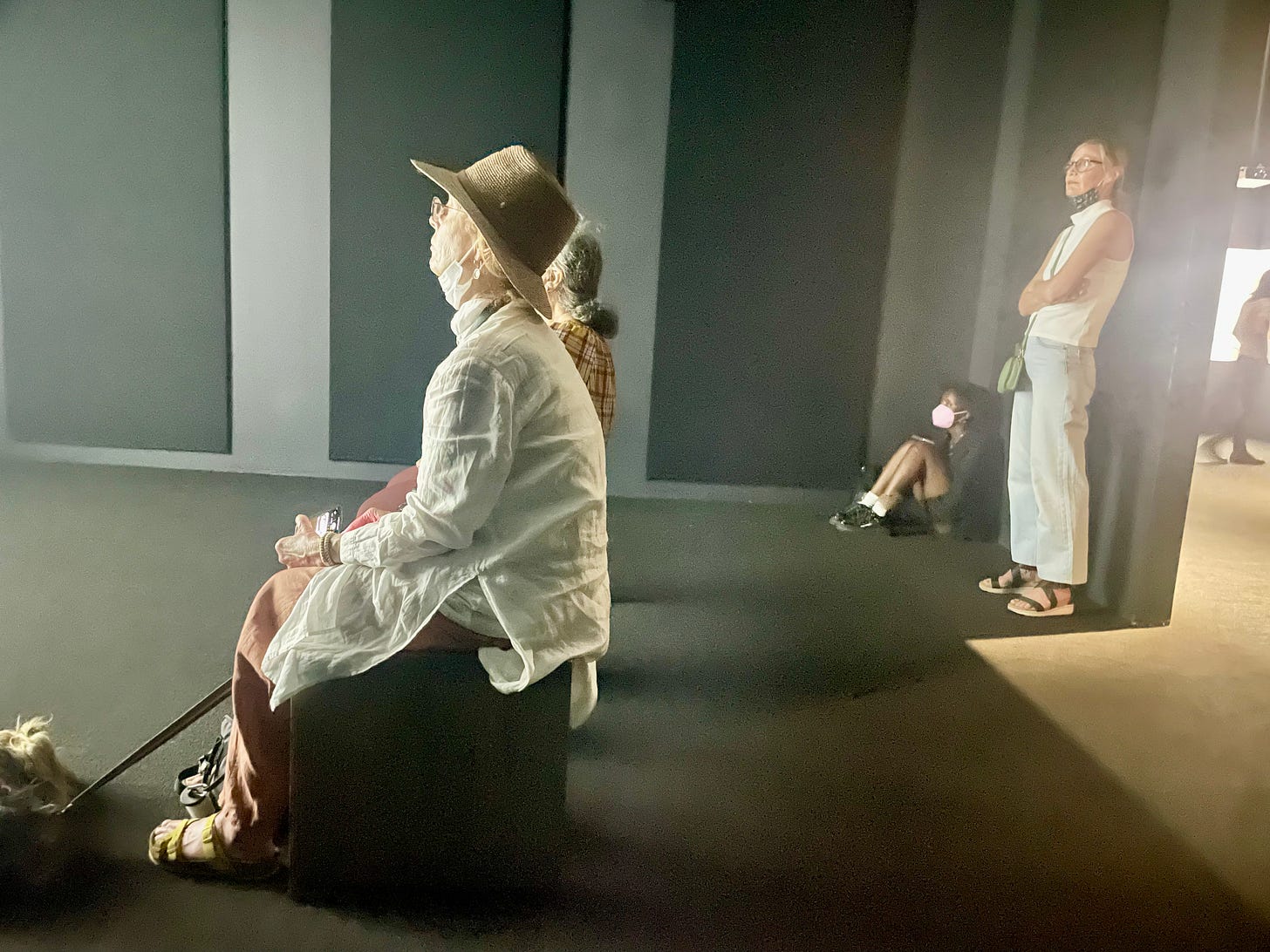
IN CASE YOU MISSED IT
This newsletter went out with a glitch that cut one paragraph, but here it is in its entirety!

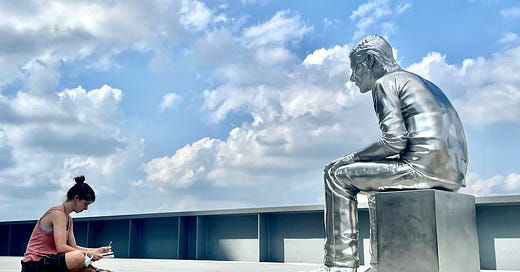





Ah, the classic, eternal question... "Is it art?"
I am glad to see you are coming back, .. Daniel, Canada.